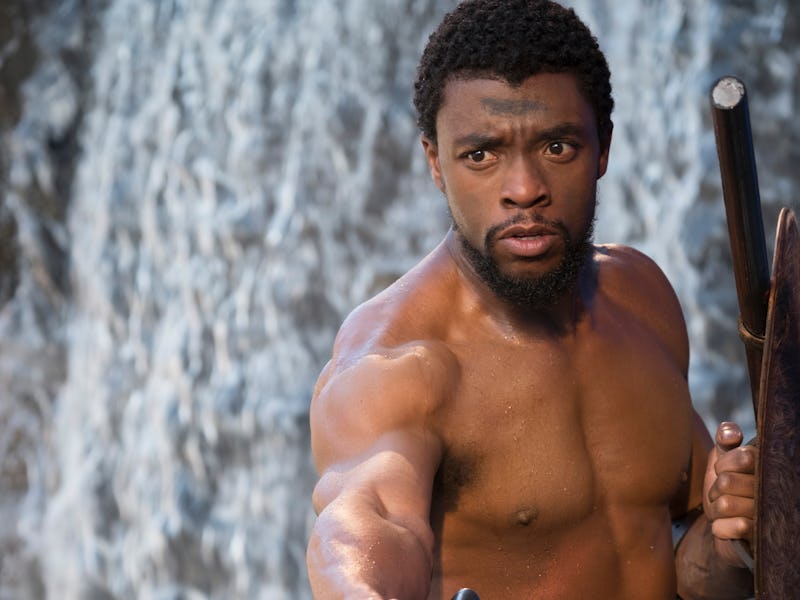Wakanda in 'Black Panther' is an Alternate Dimension Without Colonialism
From Ndebele neckrings to the architecture of Senegal, here's how Wakanda came to life.

For almost sixty years, Marvel fans have known an Earth that had Wakanda. Obviously, and sadly, Wakanda isn’t real. But is it based on a real place? As it turns out, the filmmakers, production designers, and costumers of Marvel’s Black Panther, hitting theaters on February 16, imagined Wakanda as an amalgamation of real African nations, economies, and cultures, including Nigeria, Kenya, Uganda, South Africa, and the Congo.
The distinct history that characterizes Wakanda is that its people were never subject to the indignities of European colonialism. Throughout world history, the only African nations never formally colonized were Ethiopia and Liberia, and both nations still experienced periods of western occupation.
Isolated from the rest of the world (thanks to some super science protecting its borders), Wakanda poses as a poor country when it is actually the most cutting-edge civilization on Earth. Ruled by the young king T’Challa, who possesses the ceremonial title, Black Panther, Wakanda thrives as a technologically advanced culture due in part to the extremely rare resource, Vibranium, which is mined from a meteor that fell from space thousands of years ago. Imagined by Stan Lee and Jack Kirby in the pages of Fantastic Four in 1966, Wakanda is the backdrop for civil unrest in Black Panther, directed by Ryan Coogler.
“Wakanda is an interesting look at where African nations could have been had it not been for colonialism,” wrote HuffPost contributor Dwayne Wong (Omowale) in a 2016 essay, “but the reality is that every African nation has been impacted by the negative legacy of colonial domination and this has hindered Africa’s development ever since.”
Wakanda, as it appeared in 'Fantastic Four' #52 in 1966.
The Congo’s rich amounts of coltan, a valuable metal used in everything from PlayStations to cell phones, also played a role in influencing Ryan Coogler’s vision of Wakanda. However, unlike Wakanda, the Congo is a perfect example of resource curse, a paradox in which a country with abundant natural resources are worse-off than countries without them.
The Congo has been plagued by colonization and occupation throughout its history. But a reality where the Congolese were able to capitalize on coltan for themselves was the thought experiment that got Coogler’s creative juices flowing. “We asked ourselves, did the vibranium make Wakandans special, or were Wakandans already something special and made something of vibranium? We decided it was the Wakandans,” said Coogler in a September 2017 preview of Black Panther during Congressional Black Caucus Week.
The Dora Milajae in 'Black Panther.'
But if Wakanda is able to thrive without outside influence, then what does Wakanda look like? That was the question producer Nate Moore, production designer, Hannah Beachler, and two-time Oscar-nominated costume designer Ruth E. Carter asked themselves.
In an interview with Nerdist, Moore explained that Wakanda was one of the birthplaces for the first African people. So as they spread, they took pieces of Wakanda with them, allowing Wakanda to be a blend of various African designs, fashions, and traditions.
“They spread out, they took their traditions and their architecture and their pottery with them, and that became the basis for Kenya and that became the basis for the Central Republic of the Congo,” said Moore.
In an interview with Collider, Beachler, whose credits include Coogler’s 2015 drama Creed and Beyoncé’s Lemonade, echoes Moore.
In researching how to build Wakanda, the production designer said she “fell in love” with the “organic” works of the late architect Zaha Hadid. “Her architecture is very voluptuous and very flowing, very organic,” Beachler described. “And the more I started digging into Senegal and Nigeria and finding things, while not necessarily futuristic-looking, very modern in their sensibilities as far as the way they’re putting together their elements and the colors that they use. I was struck by that.”
The Wakandan throne room exemplifies the Afrofuturistic architecture sought for Marvel's 'Black Panther.'
Carter, the film’s costume designer, outfitted the Wakandans with Ndebele, Zulu, and ancient Nigerian fashions. In describing the Dora Milaje, the female royal Wakandan guard, Carter explained that their neck rings were inspired by Ndebele women from South Africa. “The neck rings needed to have a hand-done feel,” Carter told Entertainment Weekly. “Most jewelry you see from Africa looks like someone hammered it and molded it by hand.”
There’s influence in how Wakandans speak, too. In 2016’s Captain America: Civil War, when T’Challa (Chadwick Boseman) unknowingly says goodbye to his father, King T’Chaka (John Kani) in Vienna, the language they spoke in was Xhosa, a language known for its verbal pops or clicks. Xhosa is commonly spoken in South Africa and Zimbabwe, with about 8.2 million native speakers worldwide.
Wakanda, unfortunately is not a real place. But when you’re in the theater seeing the vibrant Marvel superhero movie, don’t forget that there’s real-world influences in Wakandan culture.
Marvel’s Black Panther will be released on February 16.